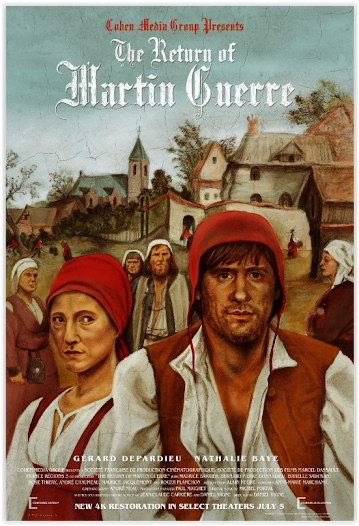A case of "he said, she said"
Wednesday, September 28, 2022
Steve Martin was one of the first of the early Saturday Night Live squad to parlay his comedic skills into a long-standing big-screen career. By 1984, he was established as a popular film funnyman, already appearing in three laughers directed by friend Carl Reiner. Their fourth collaboration was All of Me, a sometimes silly but often hilarious and heartfelt body swap comedy that many fans hold dear to their funnybone. Last week, the CineVerse group scrutinized this picture and determined if it still holds up or has lost its luster nearly 4 decades later, as detailed in our shared notes below (Click here to listen to a recording of our group discussion).
Read more...
What is distinctive, surprising, or memorable about All of Me?
- The success or failure of the picture rests primarily on Steve Martin’s shoulders. He has to convince us with his physical comedy and humorous talents that he is truly possessed by a woman. Consider the challenges of pulling this off: He has to consistently and believably portray a male character on his left side and a female character on his right side, with respectively different mannerisms, idiosyncrasies, and gender-driven personality traits that contrast. That makes this a remarkable performance, even if you don’t care for the movie or fail to find it funny.
- If you perceive a sexual dynamism and chemistry between Martin and Victoria Tennant (who plays Terry), your instincts would be correct. The actors met on the set of this film and quickly began a romantic relationship that led to an eight-year marriage.
- Arguably, despite its faults, All of Me can leave you feeling satisfied. Perhaps that’s because it hews closely to the tenets of a nearly foolproof subgenre: the screwball comedy, in which a moral lesson is often conveyed, flawed characters are redeemed, and quirky personalities add color and depth to the story. This film may not be the funniest motion picture you’ve ever seen, and at times it’s exceedingly preposterous, but you can’t argue that it’s sweet and sincere – the opposite of a gross-out comedy or meanspirited laugher that may make your belly sore from all the big yuks but which leaves you feeling hollow and uncaring about any of the characters.
This film falls firmly within the screwball comedy subgenre. What are some traits and characteristics of classic screwball comedies?
- Farcical stories and situations—where the film pokes fun at stereotypical characters, such as fatcat filthy rich personalities and spoiled rotten daughters.
- Fast pacing in the humor and repartee, direction, editing, and dialogue delivery.
- Physical humor, including slapstick, pratfalls, and sight gags, often used to elicit major laughs and make dignified characters look ridiculous.
- A plot centered on courtship and marriage or remarriage.
- Themes highlighting the differences between upper and lower socioeconomic classes, with many of the settings taking place among the high society but involving a likable male love interest from the other side of the tracks.
- A female lead who is often strong-willed, determined, and sometimes tomboyish, commonly depicted as stronger and even smarter than her male counterpart.
- A story involving mistaken identity, misunderstanding, or the keeping of an important secret, occasionally involving cross-dressing or masquerading.
- A classic battle of the sexes between a man and a woman, with the male lead’s masculinity often challenged by a strong female love interest.
- Colorful supporting characters with quirky personalities.
Major themes
- Learning to coexist with and respect the opposite sex. Roger and Edwina are forced to share the same body, which creates physical, philosophical, and existential dilemmas that comment on distinct disparities between genders. Despite their differences, they find a way to collaborate and harmonize, ultimately falling in love. This film suggests that putting yourself in the shoes of an opposite-sex partner by demonstrating empathy and patience can make you a more well-rounded human being.
- Choosing happiness over success. Roger ultimately learns that the cutthroat world of law isn’t as fulfilling as pursuing his greater love of music.
- Opposites attract. The personalities and backgrounds of Roger and Edwina are as different as you can imagine. But through the course of the story, their characters undergo an arc of change for the better; each is humbled and learns to accept the other’s needs, wants, and preferences.
Similar works
- Identity exchange comedies, including Turnabout (1940), Vice Versa (1947), Tootsie, and Victor/Victoria
- Body swap comedies, including Freaky Friday, Big, Chances Are, Heaven Can Wait, Heart and Souls, and Being John Malkovich
- Comedies featuring gifted physical comedians, including Charles Chaplin, Jerry Lewis, and Jim Carrey
Other films directed by Carl Reiner
- Oh, God!
- The Jerk, Dead Men Don’t Wear Plaid, and The Man With Two Brains – also starring Steve Martin
- Fatal Instinct









